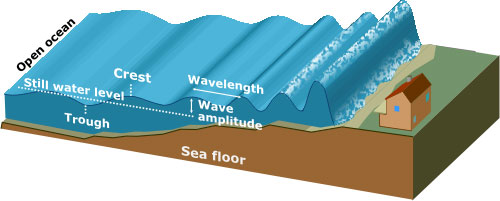« US asbestos bill at critical stage - Sen. Specter | Main | US life expectancy up to 77.6 years; gender gap narrows »
March 01, 2005
New Swiss Re Sigma Study on Catastrophes in 2004: More Than 300,000 Fatalities, Insured Losses Reach Nearly USD 50bn
 More than 300,000 people died in natural and man-made catastrophes in 2004 -- the tsunami in the Indian Ocean alone left 280,000 dead or missing. According to the latest study by Swiss Re, catastrophes caused insured losses totalling USD 49bn worldwide; most of this figure was due to windstorms in the US and Japan.
More than 300,000 people died in natural and man-made catastrophes in 2004 -- the tsunami in the Indian Ocean alone left 280,000 dead or missing. According to the latest study by Swiss Re, catastrophes caused insured losses totalling USD 49bn worldwide; most of this figure was due to windstorms in the US and Japan.
Swiss Re's sigma statistics for 2004 identify around 330 natural and man-made catastrophes worldwide, in which more than 300,000 people lost their lives. By far the largest number of victims was claimed by the tsunami in the Indian Ocean: the authorities in the twelve coastal states affected reported 280,000 people dead or missing.
The sigma study just published puts the total losses directly attributable to these natural and man-made catastrophes at USD 123bn -- of this figure, USD 49bn was covered by property insurance. For property insurers, 2004 was a record year in terms of claims, mainly due to windstorms: hurricanes in the US and neighbouring countries cost insurers around USD 32bn, typhoons in Japan and neighbouring countries a further USD 6bn.
These record figures were the result of both the unusually high number of storms -- 13 hurricanes in the US and 10 typhoons in Japan -- and the increasing concentration of insured assets in highly exposed coastal regions. Climatologists attribute the high windstorm frequency to above-average sea-surface temperatures and the high year-round average temperatures measured in the last decade. 2004 was the fourth-warmest year around the world since regular temperature measurements started in 1861.
The trend toward increasing concentrations of assets was highlighted by the damage inflicted by the hurricanes in Florida: the enormous losses of USD 19bn have to be seen against the background of 70% population growth between 1980 and 2001; in the same period, the state's gross domestic product increased by 130%. Further to tables that give an overview of the catastrophes in 2004, the sigma study also traces the biggest losses since 1970. The statistics show that, at almost USD 50bn, insured losses have taken on a new dimension. Unlike in 1992 and 2001, when one-off events such as hurricane Andrew and the 11 September terrorist attack dominated the claims burden, the record impact in 2004 was due to an aggregation of several costly losses.
Posted by Tom Troceen



